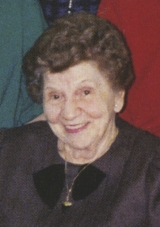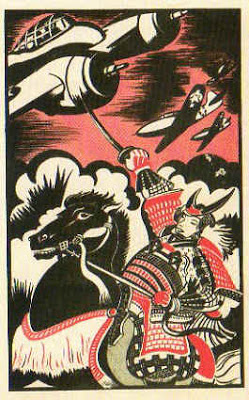Frances Blakemore facts for kids
Quick facts for kids
Frances Lee Wismer Baker Blakemore
|
|
|---|---|

Frances Blakemore circa 1980
|
|
| Born |
Frances Lee Wismer
June 19, 1906 |
| Died | August 1, 1997 (aged 91) |
| Resting place | Floral Hills Cemetery, Lynnwood, Washington |
| Nationality | American |
| Alma mater | University of Washington |
| Occupation | Artist |
| Spouse(s) | Thomas Blakemore |
Frances Blakemore (1906-1997) was an American artist, writer, and art expert. She spent over 50 years of her life living in Japan. She was also known as Frances Baker and Frances Wismer.
Contents
Early Life and Art Career
Frances Lee Wismer was born in Pana, Illinois, in 1906. Her father, George Wismer, was from Germany. In 1908, her family moved to Spokane, Washington. They opened a lunchroom there. When Frances was nine, her father died in a car accident. Her mother later remarried, and they moved to Mabton, Washington.
Frances finished high school in 1924. She worked hard to pay for her college education. She went to the University of Washington and earned a Bachelor of Arts degree in 1935. While studying, she taught art classes. She also worked as a substitute art teacher at the university. Frances made and sold handmade jewelry. She drew pictures for children's books. She also created designs for local businesses.
In 1929, Frances showed her linoleum block prints at an art show. These are pictures made by carving a design into a linoleum block. She won a prize for her print called High Water at Moore's Point, Chelan. The next year, she worked with artist Grace Perry. They published a book called Twelve Block Prints of Lake Chelan.
Many of Frances's art friends wanted to live in Paris, France. But Frances was very interested in Japan. After college, she married Glenn Frederic Baker. They moved to Tokyo, Japan. There, they taught art and English at several universities. Frances also drew weekly pictures for Japan News Week. She also painted large wall murals. She kept making block prints and showing them in the U.S.
In 1940, Frances left Japan to avoid being held in a camp. She moved to Honolulu, Hawaii, during World War II. She worked for the Office of War Information. Her job was to design special leaflets. These leaflets were dropped from planes over Japan to share information.
Life in Japan and Art Influence
Frances returned to Tokyo in 1946. She worked for the American forces that were helping Japan rebuild after the war. She designed posters and brochures for this project. In 1949, she wrote and drew pictures for Jeeper's Japan. This book was full of funny poems about life in Japan at that time.
After the American forces left, she became the director of exhibits for the American embassy in Tokyo. In 1952, she helped create an art show called Modern Prints. This show traveled across the United States. It helped many Americans learn about the Japanese sōsaku-hanga (creative print) movement. Around this time, Frances started using new art methods. She began making screen prints. She also tried collagraphs and etchings.
In 1954, she married Thomas Blakemore, a lawyer from America. Frances and her husband opened the Franell Gallery in Tokyo. This art gallery was open from 1965 to 1984. It showed the work of modern Japanese printmakers. These included artists like Yoshitoshi Mori and Tadashi Nakayama. Frances also kept making her own screen prints and abstract paintings. She had her first solo art show in 1960.
Frances also collected Japanese textiles (fabrics) and stencils. These collections were shown in the U.S. and Australia. In the 1970s, she wrote two books about Japanese design. These books were very popular and were printed many times.
A writer named Donald Richie described Blakemore's art style. He said her art was modern. It was influenced by artists like Paul Cézanne and Diego Rivera. But her art was also shaped by what she learned in Japan. She was especially interested in Mingei (folk crafts). She also loved katagami, which are Japanese hand-cut stencils.
Later Years and Legacy
In the 1980s, the Blakemores moved back to Seattle, Washington. They lived there for the rest of their lives. In 1990, they started the Blakemore Foundation. This foundation gives money to American students. It helps them study East and Southeast Asian languages.
After her husband died in 1994, Frances gave her art collection to museums. This collection included her own art. It also had hundreds of Japanese prints and textiles. These were given to the Seattle Art Museum, the Burke Museum of Natural History and Culture, and the Henry Art Gallery. Frances Blakemore passed away on August 1, 1997, at age 91.
A book about Frances Blakemore's life was published in 2007. In 2011, Frances and her war propaganda leaflets were shown on a TV show. It was a PBS series called History Detectives.
Published Works
- Jeeper's Japan (1949)
- Two books on Japanese design (1970s)


